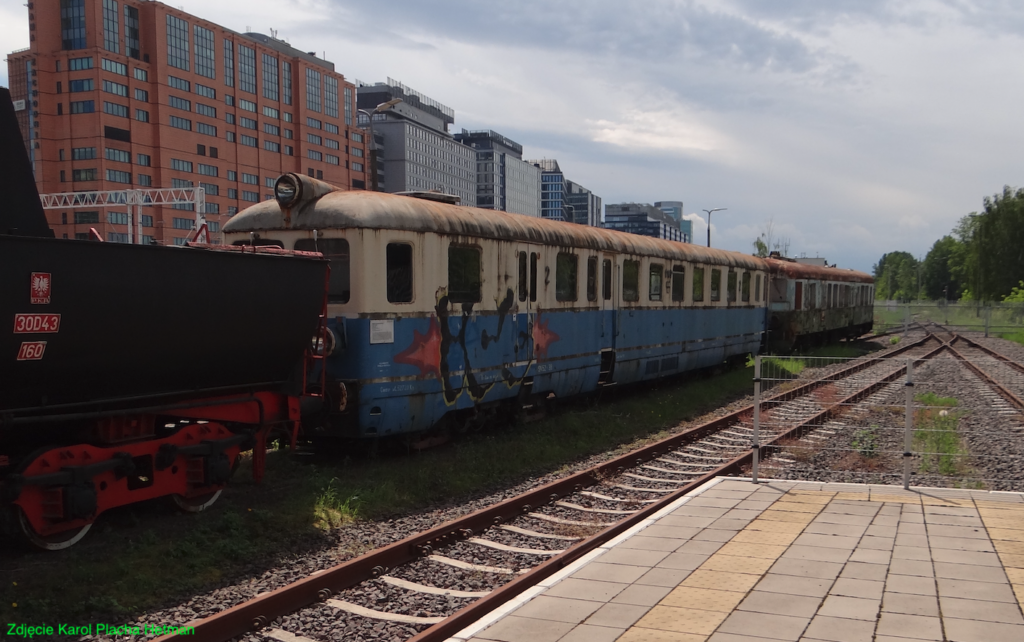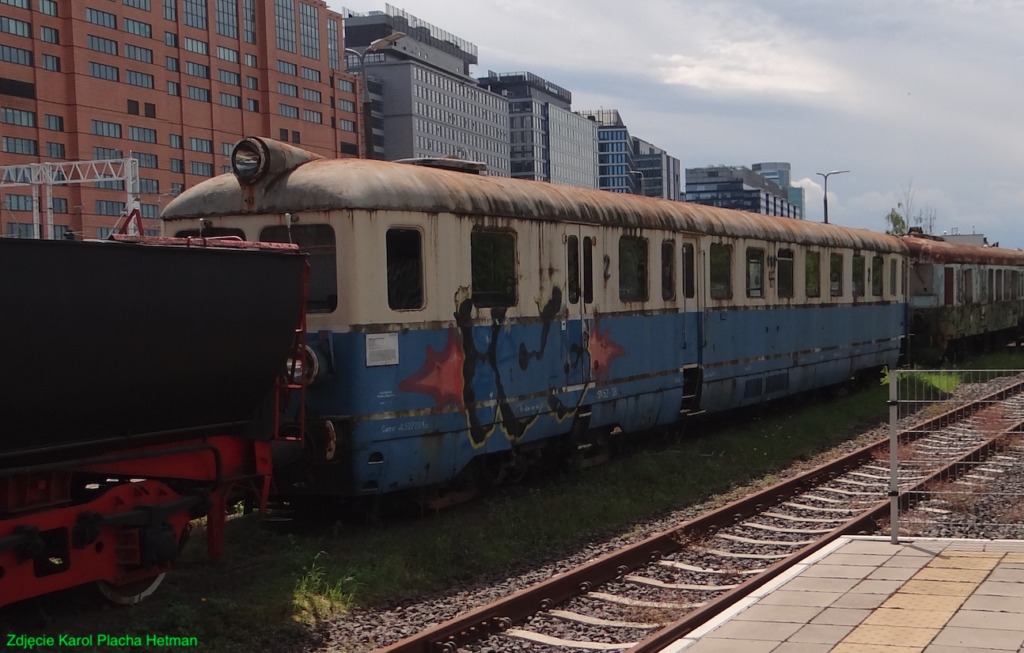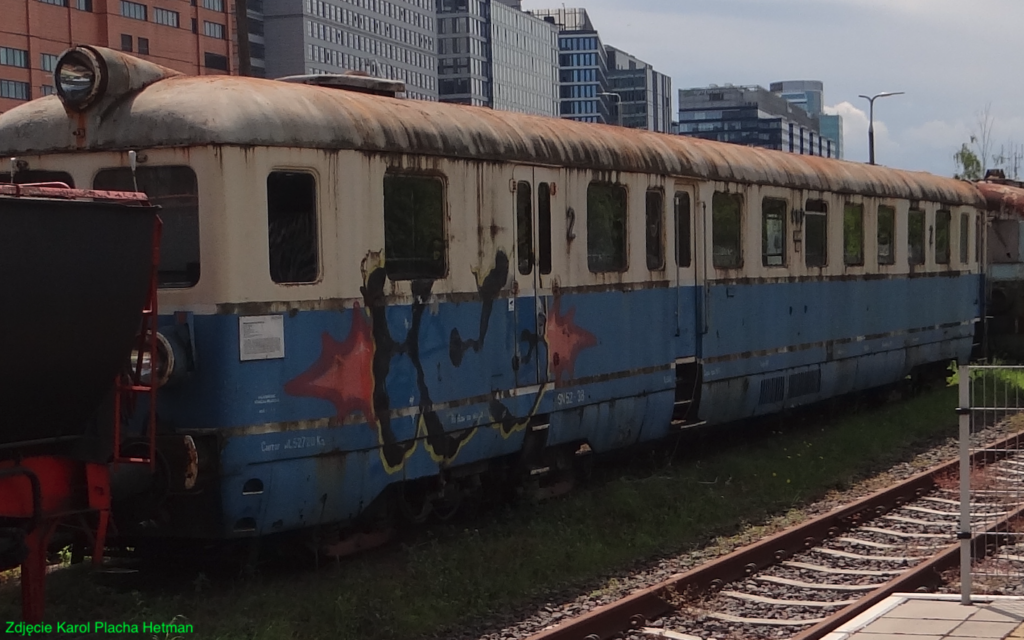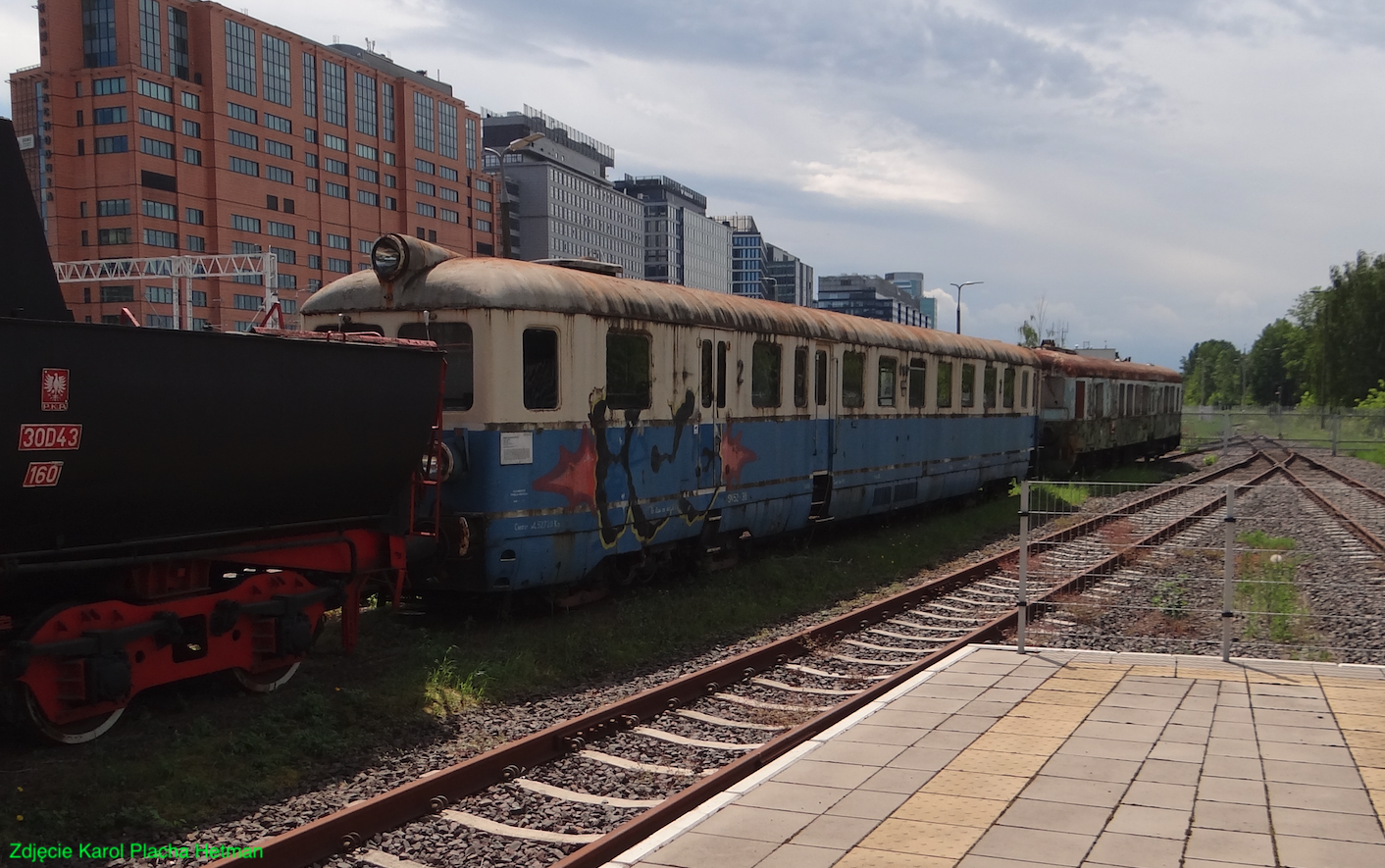Warszawa 18-06-2024
The SN52/SN60 series motor carriages were passenger carriages adapted to serve passengers boarding from low platforms on non-electrified railway routes. The wagon was powered by a diesel engine. These wagons were manufactured by the Hungarian GANZ Budapest plant and operated by PKP. The wagons were produced in the period 1954-1956. The SN52 wagon was placed on two bogies, one of which is a driving bogie and the other is a rolling bogie. B’2′ axle system. PKP had 50 motor wagons marked MsCmix / SN52 and 50 trailer wagons marked Bix 52, which do not have control cabins. Four more SN60 motor wagons with a different control system were purchased.



History.
Until World War II, motor wagons were popular and their drives were very diverse. The wagons were powered by steam engines, electric motors powered by batteries and internal combustion engines, most often powered by gasoline. Polish industry also produced this type of wagons, and the most popular was the Luxtorpeda, manufactured by FABLOK.
In 1948, PKP had 45 motor wagons in stock, mainly of German production, which came from the railways in the recovered territories. However, only 8 copies were operational. The rest were seriously damaged. Just after the war, these wagons made 10 times fewer trips than in the 30s. The main reason was the high failure rate of these wagons. The lack of spare parts meant that many motor wagons were converted into trailer wagons. In addition, the Polish State Railways needed steam locomotives and coal wagons more. In addition, there were no producers of powerful internal combustion engines and traction gears in Poland. Additionally, Poland was gradually isolated from Western Europe.
In 1949, PKP bought three SD80 series diesel wagons. The manufacturer of these wagons was the Italian company Officine Meccaniche in Milan. It was the only purchase of this type by PKP in Western Europe. Poland decided to electrify main railway routes and produce heavy steam locomotives. Diesel traction had to wait a few years in Poland. Ultimately, the choice fell on the Ganz company, which operated in Hungary and had experience from the times of the Austro-Hungarian Empire.
In mid-1950, PKP placed an order for 50 (49) motor cars marked MsCmix and 50 trailer cars marked Bix 52, which do not have control cabins. The first wagons were delivered in 1954, and regular services began in September 1954. Initially, MsCmix series wagons were assigned to DOKP Gdańsk (35 copies), DOKP Warszawa (10 copies) and DOKP Kraków (4 copies). The first routes are the Gdańsk – Pruszcz Gdański – Kartuzy – Lębork route. For the most part, wagons ran on secondary routes; Laskowice Pomorskie, Piła, Bydgoszcz, Zduńska Wola, Grudziądz, Łuków, Skierniewice. Deliveries of the motor cars were completed in November 1955. The last MsCmix power car, number 090 149, was later renamed SN52-48. This wagon was assigned to DOKP Gdańsk.
In 1956, Class 3 was liquidated and the wagons were reclassified only to Class 2. The series designation was then changed to MSBmix. As a result of changes in regulations in 1959, the designation of the wagons was changed to the series from SN52-01 to SN52-48. Two remaining wagons; No. 090 121 and No. 090 123 were already deleted from the state.
The introduction of the SN52 series wagons into service allowed the withdrawal of the Italian SD80 wagons from service, for which there were no spare parts. The SN52 wagons performed well in operation, and cooperation with the Hungarians was good. The PKP Management Board decided to sign a contract for the supply of new SN61 series motor wagons, 250 units.
Wagons from DOKP Kraków served mainly routes to Oświęcim, Chrzanów, Spytkowice, Wieliczka, Brzesko, Wadowice. Around 1961, car SN52-37 was removed from the state. In the period 1963-1964, the remaining wagons were transferred from Krakow to Gdańsk. In 1966, one SN52-11 wagon from Warsaw was transferred to Tarnowskie Góry.
As a result of the electrification of the Gdańsk junction, several wagons were transferred to the Chojnice railway junction, where they joined the SN60 series wagons. Also due to electrification, in 1966, several SN52 wagons were transferred to Olsztyn and Korsze. At the end of the 1960s, the wagons also reached Grudziądz and the Zajączkowo Tczewskie station. In 1978, SN52 wagons were only available in the locomotive depots in Grudziądz and Laskowice Pomorskie. In 1984, only the wagons remained in operation; SN52-25 and SN52-48. The last SN52-25 wagon ended its service on January 14, 1986, in Laskowice Pomorskie.
On June 11, 1986, the SN52-38 motor car was donated to the Railway Museum in Warsaw, currently (2024) “Stacja Muzeum”.
Bix 52 trailer wagons.
The Bix 52 series trailer wagons were purchased together with the motor wagons. The wagon rests on two rolling carts. Additionally, the wagon below the stands has tin aprons, just like the SN52 motor wagons. Entrance to the wagon is provided by two pairs of single-leaf doors, which are placed at the ends of the box. The carriage is adapted to serve passengers from low platforms. There are three steps under the door. The carriage is divided into two large compartments, which were initially Class 2 and Class 3. In the middle of the carriage there is an open toilet. A transition corridor runs through the wagon in the middle of the wagon axle. There are doors in the fronts of the wagons for passage to the next wagon, with a metal platform and railings. There was no tarpaulin or rubber cover. These crossings were not used in Poland. Design speed 100 km/h.
SN60 motor wagons.
The frame of the wagon body is made of steel, sections and sheets. A box containing batteries was installed under the shelter. There is also a 750 liter fuel tank (probably). The wagon body is made of sheet metal sections and covered with steel sheets with the addition of copper to increase corrosion resistance. The sheet metal on the sides of the wagons is 2 mm thick and on the roof 1.5 mm thick. A sheet metal apron was installed below the frame to improve the aerodynamic flow of the wagon.
Initially, there were three windows and two headlights in the fronts of the wagons. After modernization, two larger windows and three floodlights were installed. The headstock was equipped with; classic bumpers, classic screw coupling and brake lines. Originally, there were supposed to be doors in the fronts of the trains enabling passage to the trailer carriage, but this type of solution was not used in Poland.
Inside, there are wooden profiled benches for travelers, placed in two compartments; small and large. There is also an engine compartment and a luggage compartment in the interior. Control cabins were installed at the ends of the box.
The motor wagons had an 8-cylinder Ganz-Jendrassik VIII Jat 170/240 diesel engine with a five-speed pneumatically controlled mechanical transmission and water cooling. In later years, Polish Wola 3DVSRa engines were used, with a power of 220 kW (299.12 HP), which was used in tanks and in SM30 diesel locomotives from the factory in Chrzanów, FABLOK. There was also a Wola 2DSVa-350 engine, with a power of 257 kW (349.42 HP).
T-T data of the SN52, SN60 motor wagon:
B’2′ axle system. Service weight 55,300 kg. Length 25.48 m. Width 2.84 m. Height 4.02 m. Wheel diameter 0.92 m. 8-cylinder engines; Ganz-Jendrassik VIII JaT 170/240, with a power of 320 HP at 1,250 rpm and 290 HP at 1,000 rpm or Wola 3DVSRa engines, with a power of 220 kW (299.12 HP). Design speed 95 km/h. Number of seats 68.
SN52-38 motor car.
On June 11, 1986, the SN52-38 wagon was donated to the Railway Museum in Warsaw, currently (2024) “Stacja Muzeum”.
Written by Karol Placha Hetman
